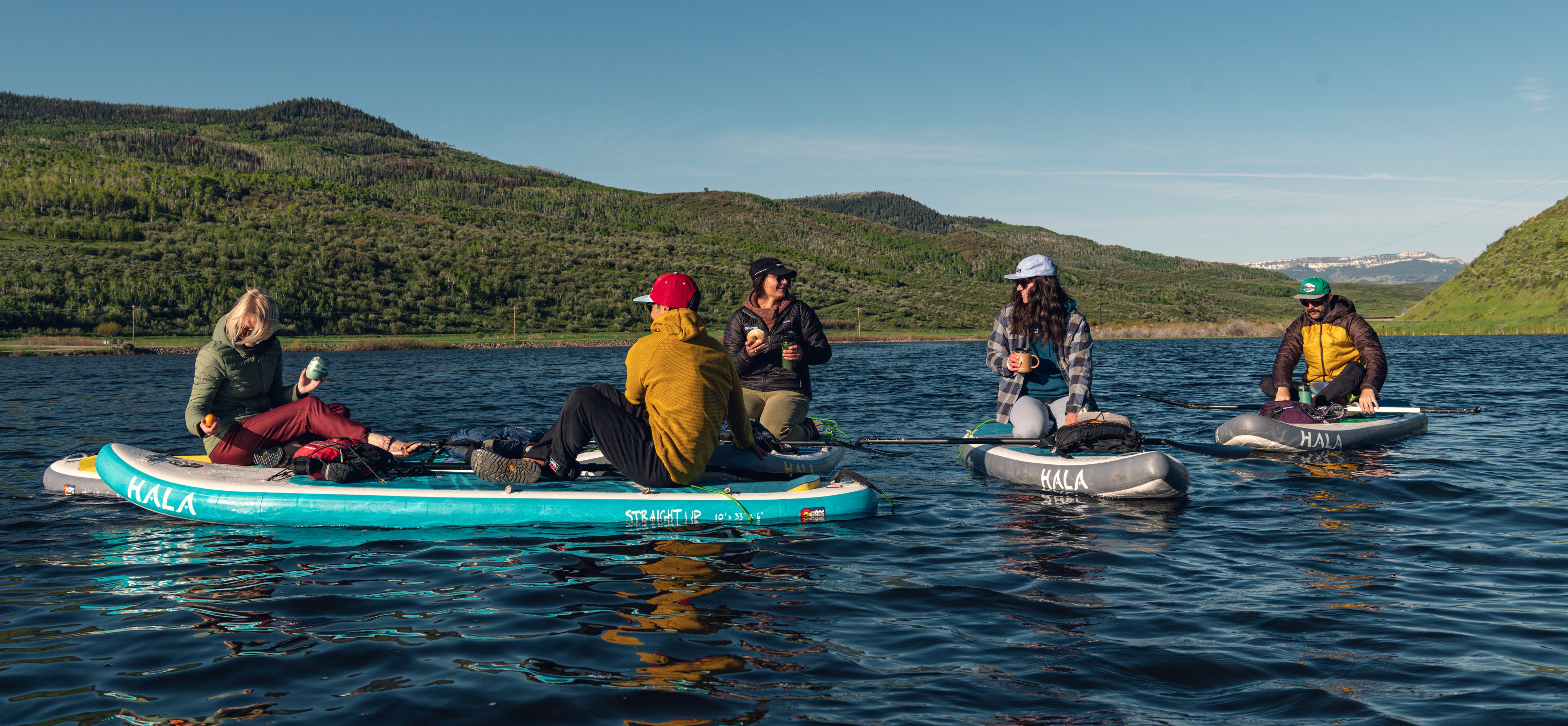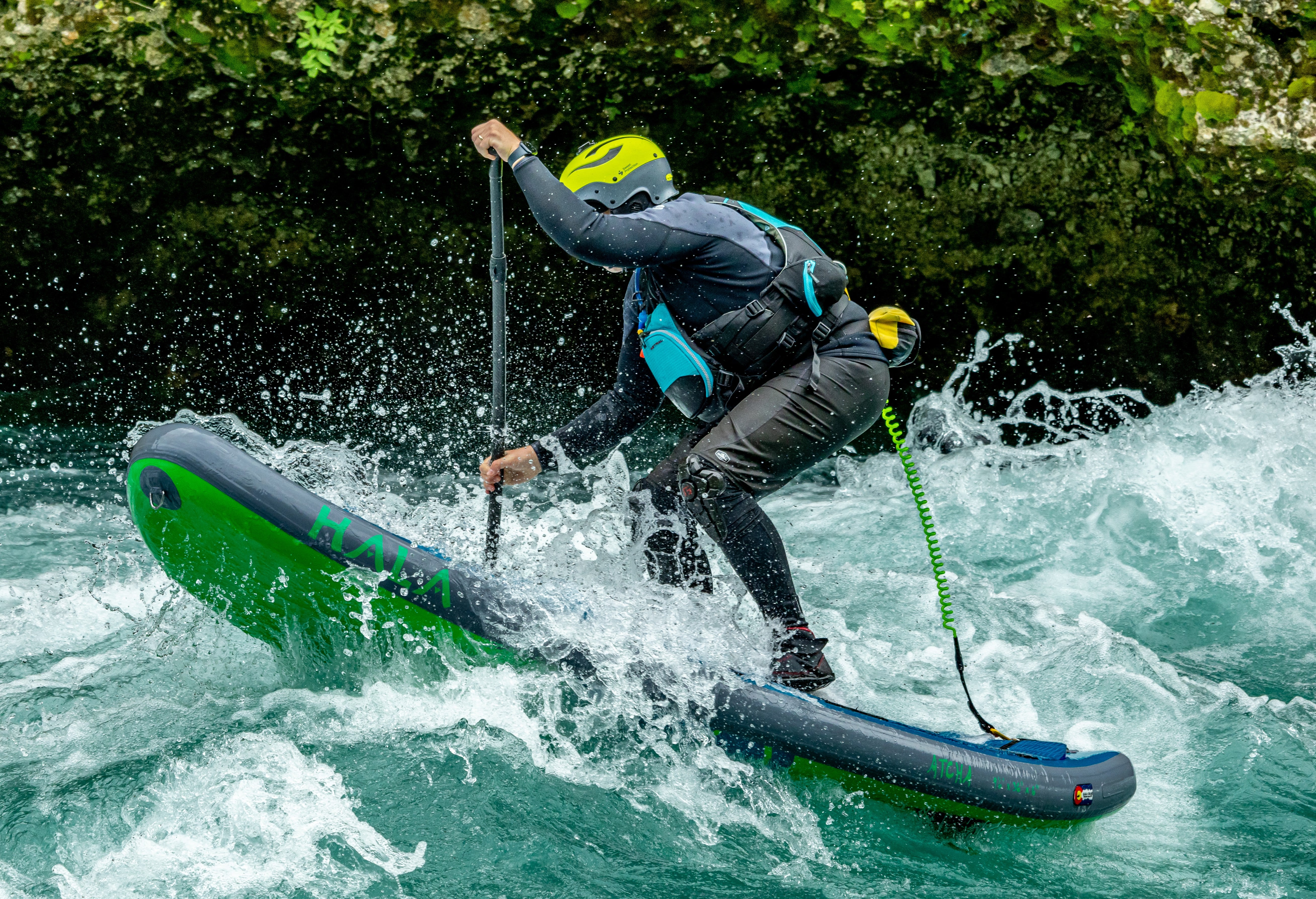SUP Safety
- Know the water and the weather you are paddling in.
- Wear a PFD (or have one on your paddleboard). Most states require this.
- Use a Leash (+ Know the right leash depending on the water you're paddling.)
Any Leash Can Be Deadly If Not Used Properly
Never Use A Leash Until You Understand Proper Use, Risks + Safety Precautions
|
FLAT WATER - Ankle Leash OK. |
MOVING WATER - Releasable ONLY. |
An ankle leash can keep your board close to you. If your PFD is on your board and you are not using a leash, you are at risk of a long swim without flotation. |
Your leash can snag on obstacles in moving water, possibly keeping you underwater as the current pushes you down. You must be able to easily reach your release mechanism at all times. |
|
|
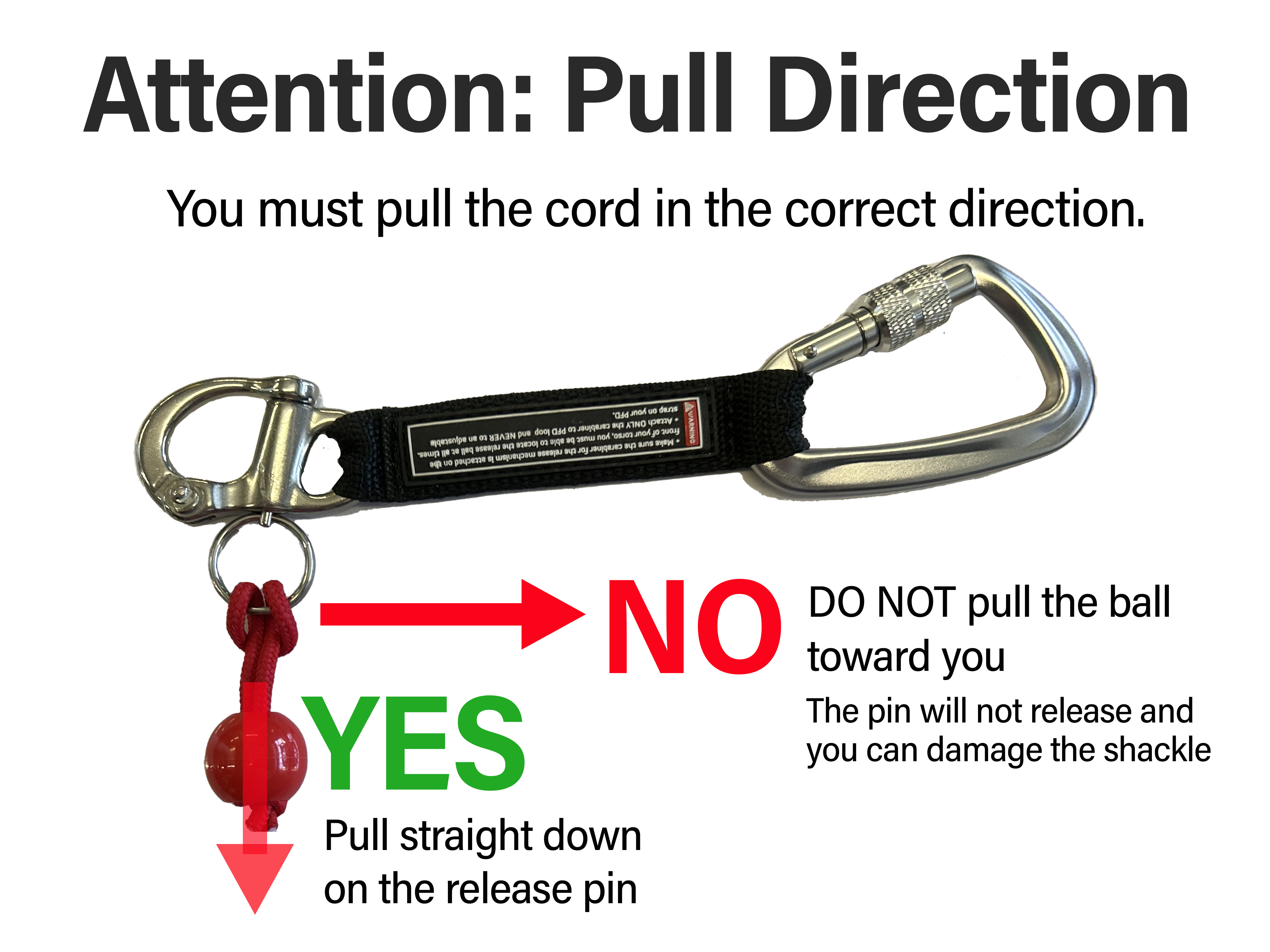
releaseable leash use
pull direction
Pulling the leash the wrong direction can result in failure to release from your SUP and life-threatening entanglement. Be sure you are pulling the leash pull cord straight down to release the pin.
Practice release before hitting the water on your SUP.

releaseable leash use
attaching your leash
Loop and Ball must be FREE AND CLEAR of the shackle to be useful. If the rope and loop are not hanging freely, the leash will not release properly.
Always check your gear to ensure proper attachment. We recommend attaching your leash to your PFD on a loop in the FRONT of the PFD.
Wherever you choose to attach the carabiner, you MUST ensure the carabiner and release mechanism will not slide around to the bcak of your PFD and then become OUT OF REACH.
Some PFDs will not have a suitable place to attach your leash. Do not use a leash unless the leash can be attached in a location that will keep the release mechanism 100% reachable!

Video
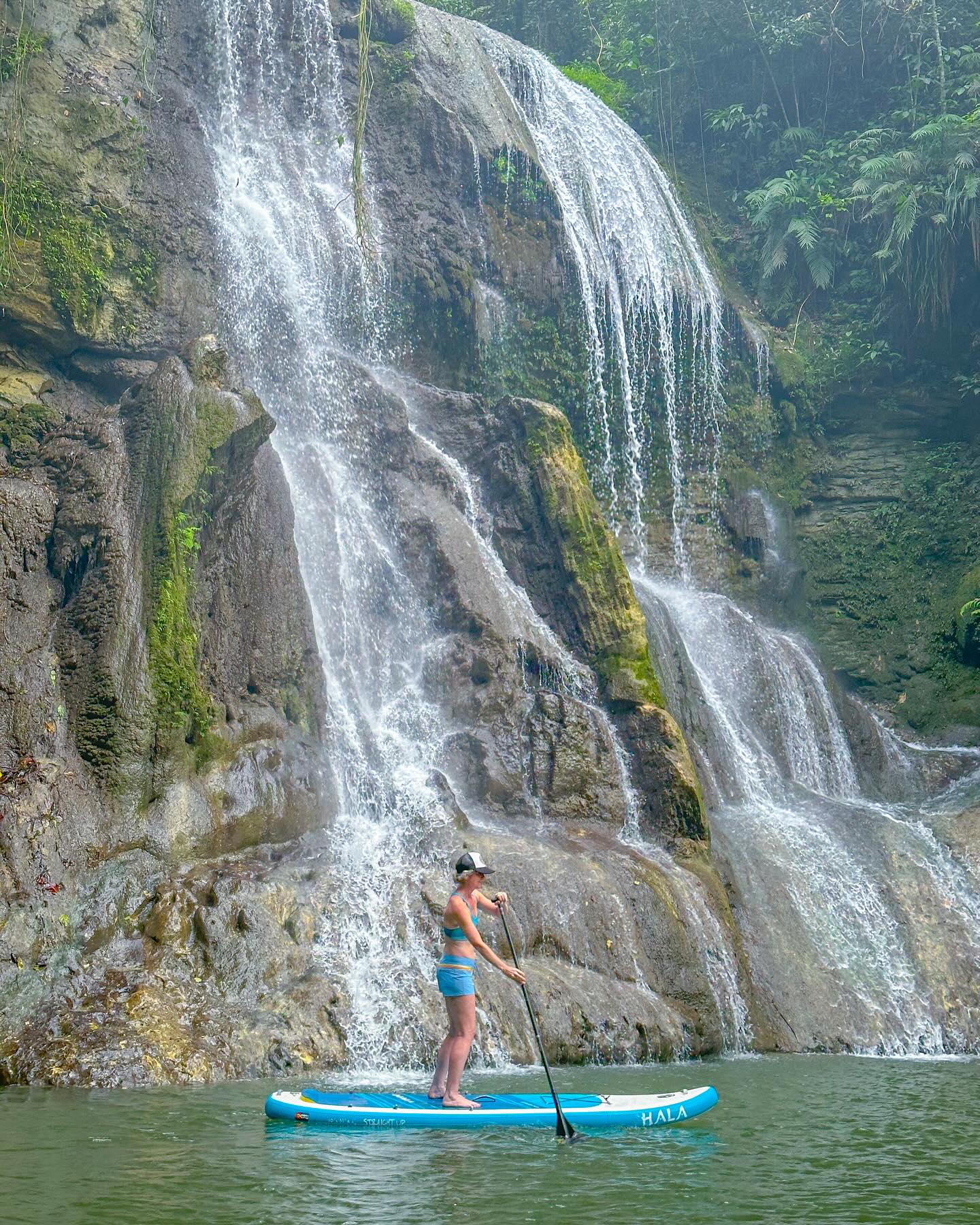
River SUP safety
If you’re going with a group make sure to take the time to assess everyone’s skill levels. This allows you to make sure everyone in your crew can tackle the water you’ve chosen to paddle and gives you an idea of who may need an extra hand once you’re out there. It’s also helpful to know who is most likely to keep their cool if something comes up.
Ensure everyone on the crew knows safely swimming positions and other techniques that could become crucial in a tight situation.
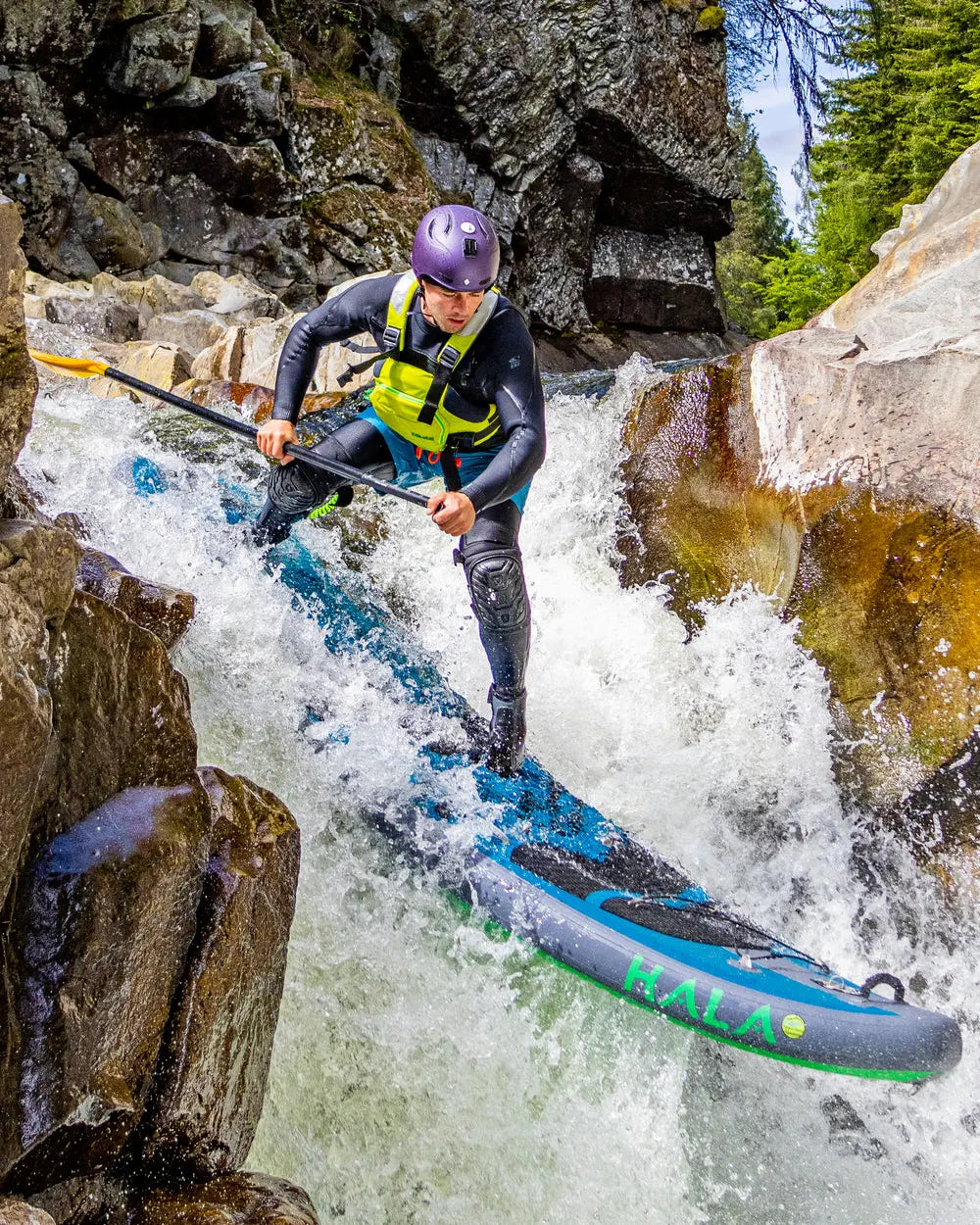
More IMPORTANT river SUP concepts
"Rigged to flip"
Ensure you and your follow adventurers are able to securely attached all the gear they brough to their craft, just in case your boat tips or flips.
Use Leave No Trace Principles
Leave a place better than you left it. Do not leave trash. Consider
microtrash and loose trash on your craft. Be sure your trash is secured during your adventure so you don’t accidentally lose it.
Know your crew (and what they know)
Aggressive Swim Position
- Most important: Keep your feet up
- Stomach down and head above water
- Swim aggressively with your arms toward the shore or boat
Be sure to avoid obstacles in the water
Downriver Swimmer Position
- Float on your back with your feet downriver, knees slightly bent
- Keep your head up and above the water.
- Don’t stand up in the river. Stay calm, and time your breaths with the waves if necessary.
- Listen for your team and Look for obstacles
- In this position, you can see where you’re going, and with your knees
bent, you can absorb some of the shock if you hit a rock and work to
avoid getting tangled with debris.
Also, make sure you all are ready to treat the chosen waterway with respect.
Terms + Concepts to Know
Rocks Make Whitewater: Is the rock friendly or not friendly?
Friendly rocks are fun: They create pillows, water flows smoothly over them, paddlers can bump into and off them or paddle over the top of them safely.
Unfriendly Rocks: Create dangerous situations. Be aware of the following
- Undercut Rocks: Create a siv that can entrap or pin boats or humans.
- Thin or sharp rocks: Paddlers or boats can get stuck on these rocks. They don’t create pillows, water rushes quickly by them.
RIVER FEATURES
Holes: Where the water rushes over a rock and creates a trough that the downstream water fills and that can create a foam pile.
Foampile: Upstream rushing water in a hole. The white and lighter color part.
Boil Line: The point where the water starts going downstream again and above which the water rushes upstream.
Corners: Where the foam pile disappears on the outside of the hole.
Hole Shapes
What the Foam Pile looks like in the river and how it takes up space.
Straight Hole: Foam pile runs straight across the river
Smiley Hole: The corners of foam pile are further downstream than middle.
Pocket or Frowney Hole: The corners of Foampile are further upstream than middle.
Diagonal Hole: Yup, the foam pile runs diagonally across the water.
Waves
What you play on when in whitewater, you bounce up and down, you can surf them. Waves can be so much fun on the river.
Peak: Top of wave
Trough: Bottom of wave
Shoulder: To right and left of the wave where wave begins to disappear into the current of the river.
Eddies
Slow water and slack water in a river created by an obstacle in the river or shoreline.
Top of an eddy: Very most upstream side, usually up against a rock or shoreline.
Bottom of eddy: Most downstream part where the eddy turns back into the current
Eddy Pocket: The most stationary or upstream-moving part of the eddy.
Eddy Lines: Separate the current going downriver from the upstream running slack water.
Crisp or Clear Eddy Lines: Sharp line between current and eddy
Boily, Wide or Mushy Eddy Lines: Not as distinct line, current fades into eddy
Picking your Paddle Line
When paddling whitewater, you will generally be moving from one eddy to the next eddy. From eddy to eddy, you will assess for your paddleable line taking the following items into consideration.
- Know what paddling techniques you’re good at to pick your line either
paddling the easiest way through or using your skills to move through
the line. - The fastest current usually is denoted by waves or a V.
- The V shows the fastest current and oftentimes goes between the rocks. Water in a V is deep and moving so it’s a good choice for line selection.
- Look for obstacles such as holes and rocks, etc. along your chosen line to determine how you want to handle them.
- Number 1 Priority
is to leave as much margin for error in your line as possible so if something goes not according to plan you have time to read what’s coming and calibrate your line.
Consider the Following Obstacles
Tunnel Vision: When a paddler looks right at the front of their boat rather than to the next eddy or obstacles along
their line. Always focus on the target or where you want to go rather than right in front of your boat.
Fun with rocks: You can paddle around them, Catch the eddy behind them and if there’s enough water, paddle over them. Rocks sticking up above the waterline in
the middle of the river is a pretty good indication that there’s an eddy on the backside of it.
Be aware of Current Differential: There can be a strong or smooth difference in speed between the current flow and the strength of the eddy and it’s important to know what those differences will mean for you.
River Rapid Class-ification: Choose your adventure
Knowing the skill level and experience of those adventuring with you allows you to choose the right river stretches [with paddleable features] for your group. There are six different whitewater rapid class levels to choose from, with different characteristics in each class.
General Classification Notes
Use this text to share information about your brand with your customers. Describe a product
- Class 1: Class 1 offers moving water with small waves and a few riffles. There are few to no obstructions, making this the easiest option for those who are new to whitewater rafting adventures.
- Class 2: Obvious, clear channels, small waves, and easy rapids signify class 2. These rapids are still fairly easy, but generally require a bit more maneuvering than class 1.
- Class 3: In class 3, you’ll find narrow passages that may require significant maneuvering, as well as rapids with higher, sometimes irregular waves. Class 3 is a good option for intermediate adventurers.
- Class 4: Very narrow or constricted passages and long, difficult rapids are some of the markers of a class 4 course. You may have to deal with cross-currents and powerful waves, as well as aggressive water. Class 4 may also require some scouting and the course isn’t always very clear.
- Class 5: If you are an experienced whitewater rafter, class 5 is still a difficult, and sometimes dangerous, choice. You’ll find violent rapids with high torrents, as well as obstacles that are extremely hard to maneuver. Class 5 should be left to experts, as even when you know what you’re doing, it can be a dangerous ride.
- Class 6: It is extremely dangerous to try to beat a class 6. In fact, these rapids are generally not commercially raftable, and should only be taken on by teams of experts. Even then, they are life-threatening and nearly impossible to navigate. Class 6 includes the fastest moving water, extremely turbulent waves, cross-currents that are nearly impossible to move through, and more. There is a very real and present risk of life with class 6 rapids.
Keep in mind that the classification of the water you plan to navigate is not set as a challenge, but instead as a safety precaution. You can find a guidebook for the section of river you plan to paddle to get an idea of what rapids, campsites, hikes, and geographic and historic features you will encounter on your adventure. It’s important to fully know and acknowledge your skill level and the kind of adventure you want to have and match it to the right classification and stretch of water you will paddle. , share announcements, or welcome customers to your store.
Gear to Bring: Personal Protective Equipment and More
Before you head out to your destination, there are some items you need to bring along with you. Make sure you have the right safety gear to ensure the best trip. Below is a sampling of items you will want to bring along. Depending on the location and length of your trip, you will want to bring this gear and more to ensure you are comfortable and safe for the duration of your adventure.
Required Paddle Gear [state-based requirements]
- A lifejacket or Personal Floatation Device (PFD)
For most paddles you will want
- A helmet
- First aid kit
- Throwbag
- Plenty of water to drink
- Sunscreen
- Protective Clothing, Footwear Headwear and Eyewear
- Drybag to keep your gear dry and attached to your craft
Depending on the length and location you may want to bring
- Headlamp or flashlight
- Change of clothes + Towels
- Rescue knives
- Flares
- Back up paddles and oars
- Navigation information (guidebook, etc.)
What to Wear?
Whether you’re new to the adventure of rafting or have been out on the water several times, knowing what to wear whitewater rafting is an important part of making your adventure fun and safe. Make sure that your clothing is quickdyring, water-resistant or waterproof, so you don’t have to worry about being in wet clothes all day.
There are a variety of options to choose from, from swimming suits + SPF wear to drysuits and neoprene, allowing you condition and temperature flexibility and comfort. Wearing water shoes will help keep your feet comfortable throughout the trip and provide you the grip and functionality you will require to protect your feet.
As you’re planning what to wear on your whitewater adveture, one of the most important things to keep in mind is that you should stay away from cotton-based clothing. Cotton absorbs water quickly, which will leave you cold, wet, and uncomfortable. On top of that, wet cotton clothing gets heavy quickly.
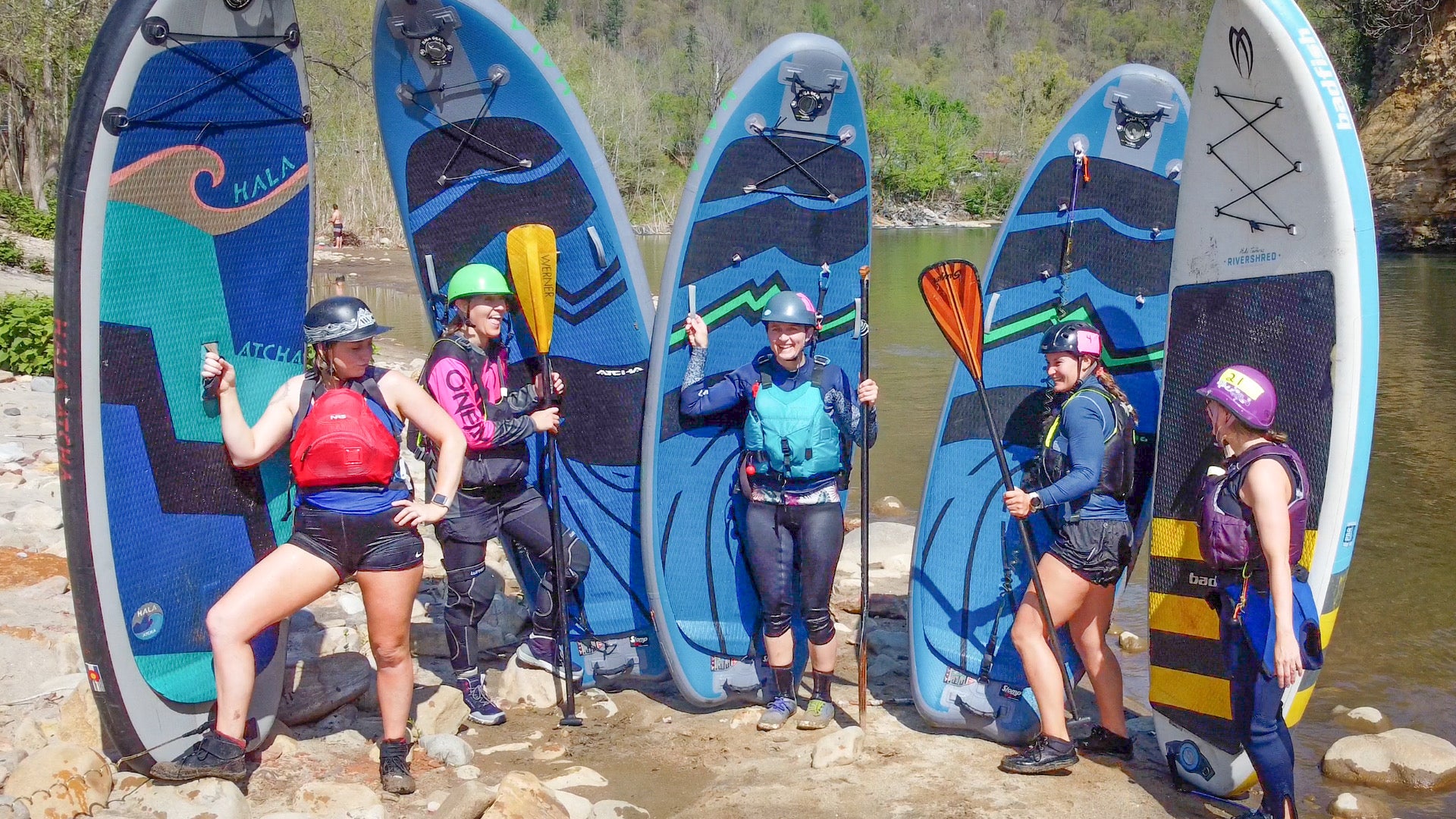
Leave No Trace + Have a Blast
Whitewater adventures will become life-long memories and thoroughly
planning your trip before you venture out allows you to have a great
time in the water, while staying safe. Anticipating dangers before ever
touching the water and planning appropriately will keep you responsibly
enjoying whitewater adventuring and all it entails.
Research and planning can help you ensure everyone is safe and it will also ensure
that you adhere to [Leave Not Trace guidelines] to help you leave the
places you enjoy better than you left them so they can be enjoyed for
years to come. Considerations like “what to do with your waste” and
“avoiding items that will leave micro trash deposits” should be taken to
do your part, (among other V important considerations).
Don’t forget to have a blast and exciting adventures, and tag us in your photos if you’re into that sort of thing!!

